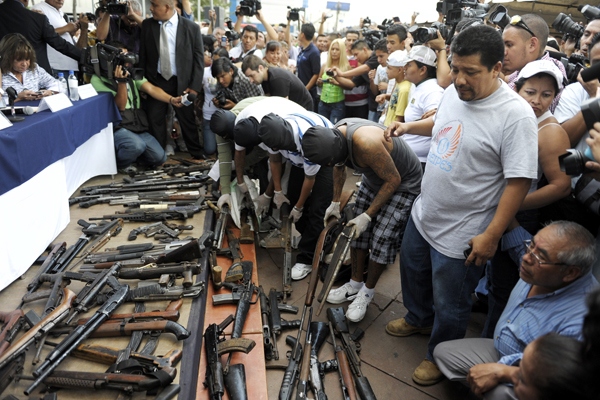
Alleged gang members hand in firearms at Gerardo Barrios Square as part of a partial disarmament in San Salvador on July 12, 2012.
Ranking second in the world’s highest murder rate, El Salvador is considered to be one of the world’s most dangerous regions—the result of a country troubled by civil wars and decades of gang warfare. For the past 160 days, El Salvador’s residents have witnessed firsthand the result of what peace can bring as two of its largest gangs declared a truce on March 9.
Although met with apprehension by El Salvador’s public and criminal experts, the truce between Mara Salvatrucha-13 (MS-13) and Bario 18 is going strong. Not only has the daily homicide rate dropped by nearly 70 percent, the country’s financial market is benefiting as yields on Salvadoran dollar bonds have hit an all time low this year.
If the ongoing truce wasn’t surprising enough, the two gangs have taken part in a partial disarmament with the expectation of firearm hand-in to continue as MS-13 and Bario 18 plan to present a proposal to the government. In the request, the implementation of training programs and grants targeted toward socially reintegrating active gang members.
For the most part, the Salvadorian government has kept its distance from the situation as it still questions the truce’s intentions. In doing so, the development of a long-term gang violence prevention and rehabilitation plan has not been considered.
In July, an 11-member U.S. delegation group specializing in gang prevention visited El Salvador to further along the peace effort after successfully working on Chicago and Los Angeles’ gang prevention models.
Hopefully the delegation is right when it says that it hopes El Salvador will “sustain peace and serve as a model for other nations.”
– Juan Frausto
(Photo credit: Jose Cabezas)
Think people should hear about this?